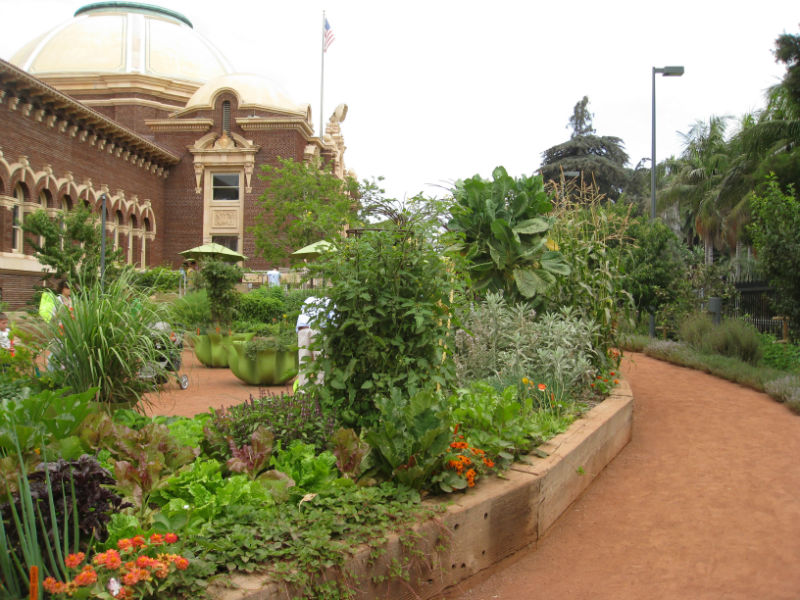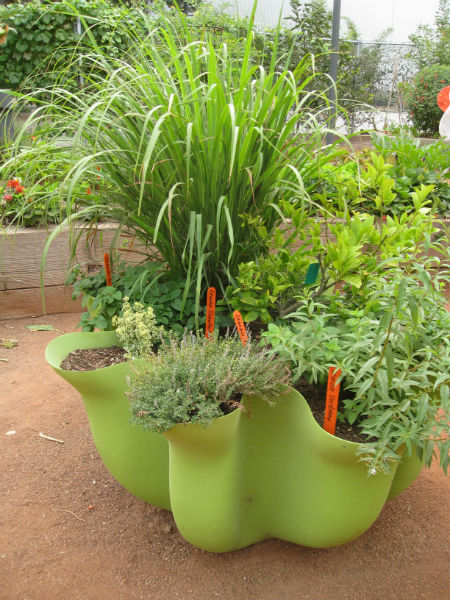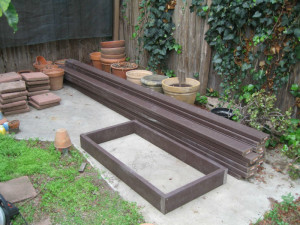Amongst the dinosaur bones, fossils, and taxidermy, there is a beautiful reason to step outside at the Natural History Museum in Los Angeles, CA: the Edible Garden (or Home Garden as they like to call it). You can see the expanse of fragrant and colorful roses from across the fence, but only in the Edible garden can you catch, marvel, and release insects of all sorts as you browse tasty heirlooms growing in abundance.
Each plant is carefully marked to help guests identify foods that commonly grace their kitchen table. Eggplants, corn, tomatoes and cabbages are among the usual suspects. You’ll also find uncommon characters like comfrey, cardoons and tree collards filling out the landscape.

Sturdy beds filled with green onions and marigolds repel pests while strawberries line the edges (a signature styling of Jimmy Williams of Hayground Organics, who maintains the garden).

Permanent metal trellises create curves and add whimsy to the design, and several over-sized molded green pots hold herbs at eye level for little explorers to inspect more closely.

Kids enjoyed seeing how peas and grapes grow, and marveled at all the different lettuces and basils available.

Most of the garden was in tip top shape, but it also gave people a chance to see how plants reach the end of their cycle as the season progresses. The corn was already dried on the cob, having past its prime. Some greens were bolting to seed as summer’s heat came on.

Artichokes and cardoons made gorgeous flowers, once they were spent, providing pollen for beneficial insects. The garden was full of life and it was a joy to spend most of the day there.



Why do my leafy vegetables keep flowering, what does that mean, am I watering too much?
Leafy greens bolt to seed very quickly this time of year due to stress and heat. I prefer to grow my lettuces and other greens in the fall or early spring to prevent this from happening. When the plant finishes its lifecycle, it’s time to pull the plant and put it in the compost bin. If it is bolting prematurely, it could be because of not enough water or too much heat. Next time, try covering the plants with shade cloth to help keep them cool.
My leafey vegetables keep flowering why? Is it oo much water and do you have to water every day? Thanks!
See my response to Nedra’s question. As you can see, this is a common problem this time of year. You’re not alone. 🙂
Love the pot with the lemony plants, beautiful.